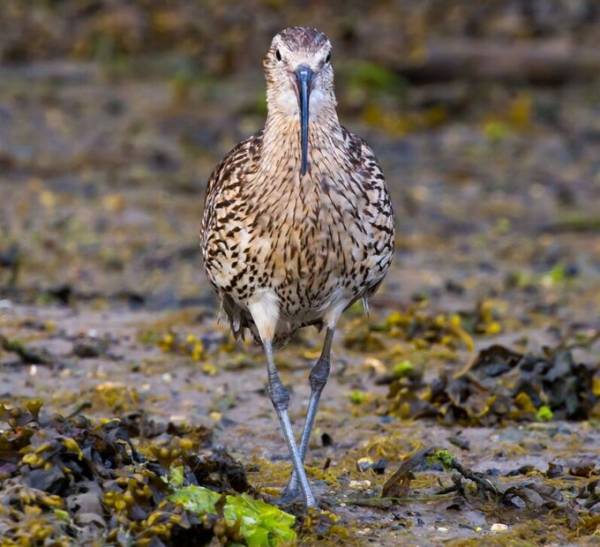Numenius arquata - Eurasian Curlew
Phylum: Chordata - Class: Aves - Order: Charadriiformes - Family: Scolopacidae
Identification - Distribution - Lifecycle - Food - Predators - Reference Sources

Description
Easily recognised by their long bluish legs and down-turned bills, Eurasian Curlews have mottled brown and grey plumage. Males and females are similar in appearance, but the females are larger than the males. Also known as Common Curlews (or simply as Curlews) these large shore birds have white wedges on their rumps, visible from below when they are in flight.
This large wader, 50 to 60cm in length and with a wingspan of typically 90cm, has a lifespan of about five years.

Distribution
Curlews can still be seen around most of Britain's coastline.
In some southern European countries, Eurasian Curlews are seen mainly as migrants, but in Britain and Ireland they not only nest (often in heathland sites) in spring and early summer but also remain in coastal areas to overwinter. Sadly, the number of Curlews recorded in Britain has fallen substantially in recent decades; the decline is generally thought to be due increased predation and to habitat loss caused by modern agricultural practices.
Breeding
Curlews on the ground amongst long tussock vegetation, and usually there is a single clutch of four eggs. The young hatch after about four weeks and are fledged about five to six weeks later. Once the young can fly, adults and young birds leave their upland breeding sites and move to coastal locations.
Feeding
Curlews eat worms, crustaceans and shrimps, which they detect in muddy estuary waters using their sensitive probing bills. They also feed on aquatic invertebrates on freshwater lake shores.
Acknowledgements
This page includes pictures kindly contributed by David Kelly.
Please Help Us: If you have found this information interesting and useful, please consider helping to keep First Nature online by making a small donation towards the web hosting and internet costs.
Any donations over and above the essential running costs will help support the conservation work of Plantlife, the Rivers Trust and charitable botanic gardens - as do author royalties and publisher proceeds from books by Pat and Sue.

